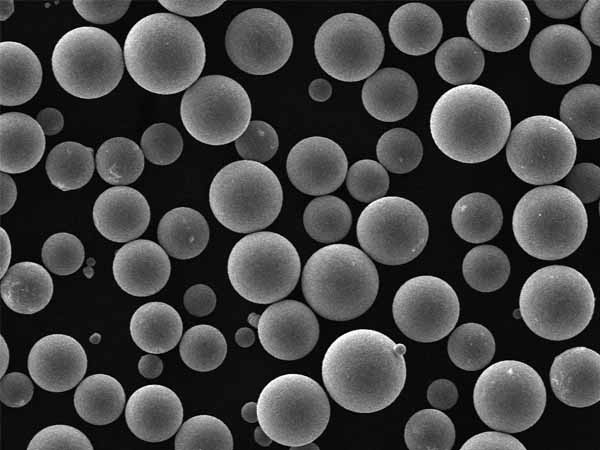Übersicht
Binder Jetting Additive Fertigung revolutioniert die Art und Weise, wie wir über Fertigung denken. Diese innovative Technologie, die zur Familie des 3D-Drucks gehört, verwendet ein flüssiges Bindemittel, um Schichten aus pulverförmigem Material zu einem festen Teil zu verschmelzen. Die Vielseitigkeit des Binder Jetting liegt in seiner Fähigkeit, mit verschiedenen Materialien zu arbeiten, darunter Metalle, Keramiken und Polymere. Das Verfahren ist kostengünstig, schnell und eignet sich sowohl für die Herstellung von Prototypen als auch für die Großserienproduktion. Tauchen Sie ein in die Welt des Binder Jetting und erfahren Sie mehr über die Feinheiten, Anwendungen und die spezifischen Metallpulver, die in diesem transformativen Prozess verwendet werden.
Arten und Zusammensetzung von Binder Jetting Additive Manufacturing
Bei der Binder Jetting-Technologie können verschiedene Arten von Pulvern und Bindemitteln verwendet werden. Hier ist ein detaillierter Blick:
| Material Typ | Zusammensetzung | Eigenschaften | Merkmale |
|---|---|---|---|
| Metall-Pulver | Eisen, Stahl, Bronze, Titan, Nickel | Hohe Festigkeit, Haltbarkeit | Hervorragend geeignet für Funktionsteile, hohe thermische und elektrische Leitfähigkeit |
| Keramische Pulver | Aluminiumoxid, Zirkoniumdioxid, Siliziumkarbid | Hohe Härte, Hitzebeständigkeit | Geeignet für Hochtemperaturanwendungen, verschleißfeste Teile |
| Polymer-Pulver | Polyamid, Polypropylen | Leicht, flexibel | Ideal für komplexe Geometrien, weniger haltbar im Vergleich zu Metallen |

Anwendungen von Binder Jetting Additive Fertigung
Die Vielseitigkeit des Binder Jetting macht es für eine breite Palette von Anwendungen geeignet:
| Industrie | Anmeldung |
|---|---|
| Luft- und Raumfahrt | Leichte Strukturkomponenten |
| Automobilindustrie | Motorenteile, Prototypen |
| Medizinische | Kundenspezifische Implantate, chirurgische Werkzeuge |
| Konsumgüter | Schmuck, Sonderanfertigungen |
| Industrielle Fertigung | Werkzeugbau, Gussformen |
| Kunst und Design | Skulpturen, Kunstwerke |
Spezifikationen, Größen, Güteklassen und Normen
Bei der Auswahl von Pulvern und Bindemitteln für das Binder Jetting müssen Spezifikationen, Größen, Qualitäten und Normen berücksichtigt werden:
| Material | Spezifikation | Größenbereich (Mikron) | Klasse | Normen |
|---|---|---|---|---|
| Rostfreier Stahl | ASTM A240 | 10-100 | 316L | ISO/ASTM 52900 |
| Titan | ASTM F2924 | 15-45 | Ti6Al4V | ISO 5832-3 |
| Aluminium | ASTM B209 | 20-60 | 6061 | AMS 4027 |
| Nickel-Legierung | ASTM B444 | 20-50 | Inconel 718 | AMS 5662 |
Spezifische Metallpulver-Modelle
Hier sind einige der häufig verwendeten Metallpulvermodelle für das Binder Jetting:
- 316L-Edelstahl
- Zusammensetzung: Eisen, Chrom, Nickel, Molybdän
- Eigenschaften: Korrosionsbeständig, gute Festigkeit
- Anwendungen: Medizinische Instrumente, Komponenten für die Luft- und Raumfahrt
- 17-4 PH Edelstahl
- Zusammensetzung: Eisen, Chrom, Nickel, Kupfer, Niobium
- Eigenschaften: Hohe Festigkeit, gute Korrosionsbeständigkeit
- Anwendungen: Ventile, Zahnräder, chirurgische Werkzeuge
- Inconel 625
- Zusammensetzung: Nickel, Chrom, Molybdän, Niob
- Eigenschaften: Hochtemperaturfestigkeit, Oxidationsbeständigkeit
- Anwendungen: Turbinenschaufeln, Komponenten für die Luft- und Raumfahrt
- Inconel 718
- Zusammensetzung: Nickel, Chrom, Eisen, Niobium, Molybdän
- Eigenschaften: Hohe Zugfestigkeit, ausgezeichnete Kriechfestigkeit
- Anwendungen: Triebwerksteile, Kernreaktoren
- Ti6Al4V (Titan-Legierung)
- Zusammensetzung: Titan, Aluminium, Vanadium
- Eigenschaften: Hohe Festigkeit im Verhältnis zum Gewicht, Korrosionsbeständigkeit
- Anwendungen: Komponenten für die Luft- und Raumfahrt, medizinische Implantate
- Kupfer
- Zusammensetzung: Reines Kupfer
- Eigenschaften: Ausgezeichnete thermische und elektrische Leitfähigkeit
- Anwendungen: Elektrische Komponenten, Wärmetauscher
- Aluminium 6061
- Zusammensetzung: Aluminium, Magnesium, Silizium
- Eigenschaften: Gute mechanische Eigenschaften, Korrosionsbeständigkeit
- Anwendungen: Automobilteile, Strukturbauteile
- Kobalt-Chrom
- Zusammensetzung: Kobalt, Chrom, Molybdän
- Eigenschaften: Hohe Verschleißfestigkeit, Biokompatibilität
- Anwendungen: Zahnimplantate, orthopädische Implantate
- Hastelloy X
- Zusammensetzung: Nickel, Chrom, Eisen, Molybdän, Kobalt
- Eigenschaften: Hochtemperaturfestigkeit, Oxidationsbeständigkeit
- Anwendungen: Gasturbinenkomponenten, petrochemische Industrie
- Bronze
- Zusammensetzung: Kupfer, Zinn
- Eigenschaften: Geringe Reibung, hohe Verschleißfestigkeit
- Anwendungen: Lager, Buchsen
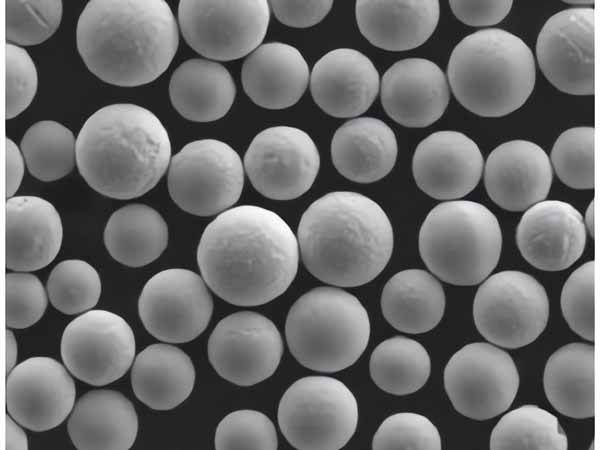

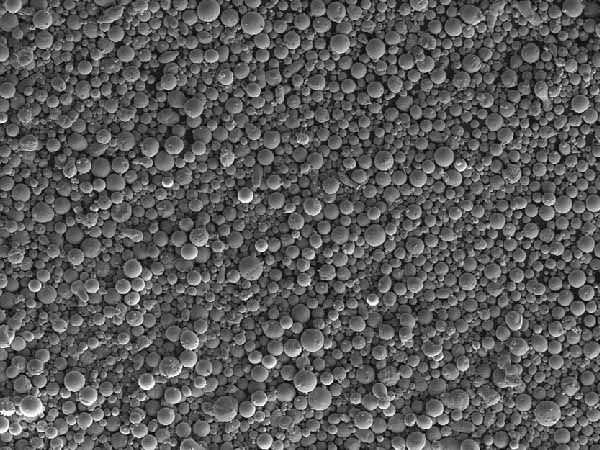
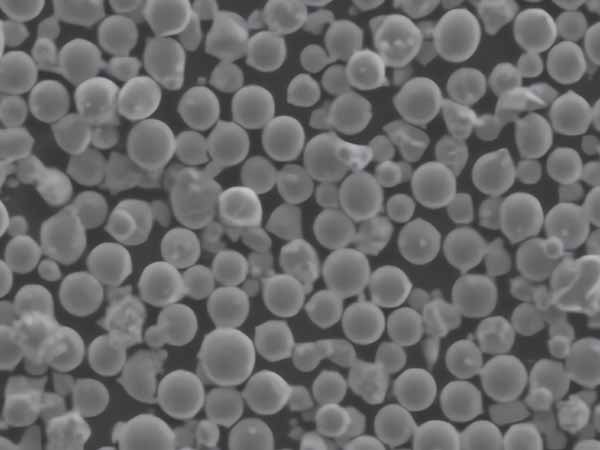
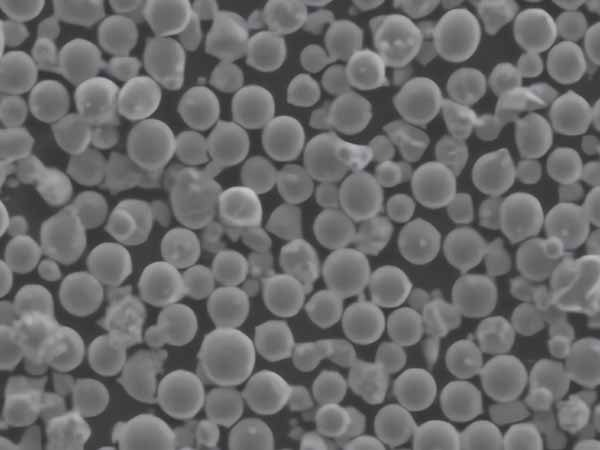

Lieferanten und Preisangaben
Die Kenntnis des Marktes und der Lieferanten ist entscheidend für die effektive Einführung der Binder Jetting-Technologie:
| Anbieter | Material | Preisspanne ($/kg) | Kontakt |
|---|---|---|---|
| GKN Pulvermetallurgie | Rostfreier Stahl, Titan | 50-150 | www.gknpm.com |
| Tischlertechnik | Inconel, Titan | 100-300 | www.cartech.com |
| Sandvik Fischadler | Rostfreier Stahl, Aluminium | 40-120 | www.materials.sandvik |
| Praxair Oberflächentechnologien | Nickellegierungen, Kobalt-Chrom | 80-250 | www.praxairsurfacetechnologies.com |
| Höganäs | Eisen, Bronze | 20-100 | www.hoganas.com |
Vor- und Nachteile von Binder Jetting Additive Manufacturing
Die Bewertung der Vorteile und Grenzen von Binder Jetting kann helfen, die Eignung für bestimmte Anwendungen zu bestimmen:
| Profis | Nachteile |
|---|---|
| Kostengünstig für große Produktionen | Begrenzte Materialoptionen |
| Hohe Produktionsgeschwindigkeit | Niedrigere mechanische Eigenschaften |
| Keine Notwendigkeit für Stützstrukturen | Nachbearbeitung oft erforderlich |
| Fähigkeit zur Herstellung komplexer Geometrien | Herausforderungen im Pulvermanagement |
| Breite Palette an Materialoptionen | Potenzial für hohe Porosität |
Merkmale des Binder Jetting Additive Manufacturing
Binder Jetting bietet einzigartige Eigenschaften, die es von anderen additiven Fertigungsverfahren unterscheiden:
- Geschwindigkeit und Effizienz
- Im Vergleich zu anderen 3D-Druckverfahren wie SLS (Selektives Lasersintern) oder DMLS (Direktes Metall-Lasersintern) ist das Binder-Jetting-Verfahren wesentlich schneller. Es ist so, als würde man einen Hochgeschwindigkeitszug mit einem normalen Personenzug vergleichen; der eine ist für schnelle Reisen konzipiert, der andere für den täglichen Komfort.
- Kosten-Wirksamkeit
- Da beim Binder Jetting keine Laser oder andere teure Ausrüstung benötigt wird, sind die anfänglichen Einrichtungskosten und die laufenden Betriebskosten geringer. Stellen Sie sich den Unterschied zwischen dem Kochen zu Hause und dem Essen im Restaurant vor: Beide bieten eine Mahlzeit, aber die eine ist viel budgetfreundlicher.
- Material Vielseitigkeit
- Mit dieser Methode kann ein breites Spektrum von Materialien bearbeitet werden, von Metallen über Keramik bis hin zu Polymeren. Es ist wie ein Schweizer Taschenmesser der Fertigung - vielseitig und in der Lage, verschiedene Aufgaben zu bewältigen.
- Komplexe Geometrie
- Mit Binder Jetting können komplizierte Designs und innere Strukturen ohne Stützmaterial hergestellt werden. Stellen Sie sich vor, Sie bauen ein komplexes Schiffsmodell in einer Flasche - mit Binder Jetting ist das möglich, ohne dass die Flasche zerbricht.
- Auswirkungen auf die Umwelt
- Das Verfahren kann im Vergleich zu herkömmlichen Herstellungsverfahren umweltfreundlicher sein, da weniger Materialabfälle anfallen und recycelte Pulver verwendet werden können. Es ist, als würde man bei der Herstellung eines Kuchens alle Teile eines Apfels verwenden - effizient und abfallfrei.
Vorteile von Binder Jetting Additive Fertigung
Binder Jetting bietet mehrere Vorteile gegenüber herkömmlichen Fertigungsverfahren und anderen additiven Fertigungstechnologien:
- Gestaltungsfreiheit
- Die Möglichkeit, komplexe, komplizierte Designs ohne Stützstrukturen zu erstellen, eröffnet Ingenieuren und Designern unendliche Möglichkeiten. Es ist, als hätte man die komplette Farbpalette eines Künstlers zur Verfügung, anstatt nur ein paar Grundtöne.
- Skalierbarkeit
- Binder Jetting eignet sich sowohl für die Produktion in kleinen als auch in großen Stückzahlen. Ganz gleich, ob Sie einen einzigartigen Prototyp herstellen oder Teile in Serie produzieren, Binder Jetting lässt sich an Ihre Bedürfnisse anpassen. Betrachten Sie es als einen vielseitigen Koch, der eine Mahlzeit für eine Person zubereiten oder ein Bankett ausrichten kann.
- Kosteneffizienz
- Bei großen Produktionsserien kann das Binder Jetting kostengünstiger sein als andere additive Fertigungsverfahren. Geringerer Materialabfall und kürzere Produktionszeiten führen zu Einsparungen. Es ist wie ein Großeinkauf im Supermarkt - je mehr Sie produzieren, desto weniger kostet jede Einheit.
- Material Bereich
- Die Technologie kann mit einer Vielzahl von Materialien arbeiten, von Metallen und Keramiken bis hin zu Polymeren. Diese Vielseitigkeit macht sie für verschiedene Branchen und Anwendungen geeignet. Es ist, als hätte man einen Werkzeugkasten mit allen möglichen Werkzeugen, bereit für jede Aufgabe.
- Schnelles Prototyping
- Die Geschwindigkeit des Binder Jetting macht es ideal für das Rapid Prototyping und ermöglicht schnelle Iterationen und eine kürzere Markteinführungszeit. Stellen Sie sich vor, Sie können eine Idee skizzieren und sehen, wie sie innerhalb von Stunden zum Leben erweckt wird - das ist die Stärke von Binder Jetting.

FAQ
| Frage | Antwort |
|---|---|
| Was ist Binder Jetting? | Binder Jetting ist ein additives Fertigungsverfahren, bei dem ein flüssiges Bindemittel verwendet wird, um Schichten aus pulverförmigem Material zu verbinden und so ein festes Teil zu erzeugen. |
| Welche Materialien können beim Binder Jetting verwendet werden? | Beim Binder Jetting kann eine breite Palette von Materialien verwendet werden, darunter Metalle (wie Edelstahl, Titan und Inconel), Keramiken und Polymere. |
| Wie ist das Binder Jetting im Vergleich zu anderen 3D-Druckverfahren? | Binder Jetting ist in der Regel schneller und kostengünstiger als Verfahren wie SLS und DMLS, kann aber mehr Nachbearbeitung erfordern, um die gewünschte Oberflächengüte und Festigkeit zu erreichen. |
| Was sind die Hauptanwendungen von Binder Jetting? | Binder Jetting wird in verschiedenen Branchen wie der Luft- und Raumfahrt, der Automobilindustrie, der Medizintechnik, der Konsumgüterindustrie und der industriellen Fertigung für Teile, Prototypen und komplexe Konstruktionen eingesetzt. |
| Ist für Binder Jetting-Teile eine Nachbearbeitung erforderlich? | Ja, mit Binder Jetting hergestellte Teile erfordern häufig eine Nachbearbeitung wie Sintern, Infiltration oder Oberflächenbehandlung, um die gewünschten Eigenschaften und das gewünschte Aussehen zu erreichen. |
| Kann das Binder Jetting funktionale Teile herstellen? | Ja, insbesondere bei der Verwendung von Metallpulvern kann das Binder-Jetting funktionelle Teile mit ausreichender Festigkeit und Haltbarkeit für viele Anwendungen herstellen. |
| Was sind die Vorteile von Binder Jetting? | Zu den Vorteilen gehören die hohe Produktionsgeschwindigkeit, die Kosteneffizienz, die Vielseitigkeit der Materialien und die Möglichkeit, komplexe Geometrien ohne Stützstrukturen zu erzeugen. |
| Was sind die Grenzen des Binder Jetting? | Zu den Einschränkungen gehören die Notwendigkeit einer Nachbearbeitung, die Möglichkeit einer hohen Porosität in den Teilen und die im Vergleich zu anderen Methoden begrenzten mechanischen Eigenschaften. |
| Wie umweltfreundlich ist Binder Jetting? | Binder Jetting kann aufgrund des geringeren Materialabfalls und der möglichen Verwendung von recycelten Pulvern umweltfreundlicher sein. |
| Welche Branchen profitieren am meisten von Binder Jetting? | Branchen wie die Luft- und Raumfahrt, die Automobilindustrie, die Medizintechnik, die Konsumgüterindustrie und die industrielle Fertigung profitieren in hohem Maße von den Möglichkeiten des Binder Jetting. |
Schlussfolgerung
Binder Jetting Additive Manufacturing ist eine leistungsstarke und vielseitige Technologie, die die Fertigungslandschaft verändert. Ihre Fähigkeit, komplexe Geometrien herzustellen, mit einer breiten Palette von Materialien zu arbeiten und dies kostengünstig zu tun, macht sie zu einer attraktiven Option für viele Branchen. Ganz gleich, ob Sie einen Prototyp für ein neues Design erstellen oder Teile in großem Maßstab produzieren möchten, Binder Jetting bietet eine überzeugende Lösung, die Geschwindigkeit, Kosten und Qualität in Einklang bringt. Wenn Sie die Stärken und Grenzen dieser Technologie kennen, können Sie sie nutzen, um Innovation und Effizienz in Ihren Fertigungsprozessen voranzutreiben.


